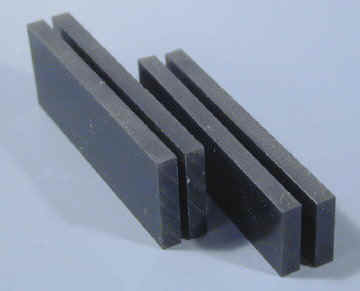Work Holding
1-2-3 Blocks – Can Wait
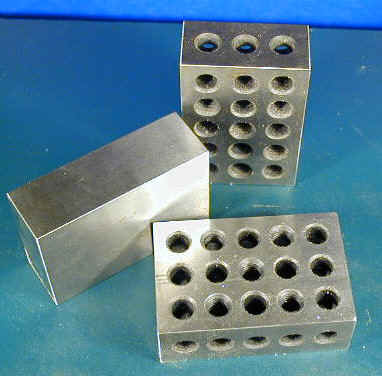
1-2-3 blocks are precision ground steel blocks that measure 1″x2″x3″ in size. They are quite useful around the shop for various clamping and setup operations, particulary on the mill table. They are available both in solid and perforated style.
The perforated ones have both tapped and plain holes that are useful for mounting in various ways. They are generally used and sold in pairs, but sometimes are priced individually, so be sure to note which way they are priced. Get them from the sale flyers from the usual suppliers such as J&L, MSC or Enco.
Clamping Kit – Can Wait
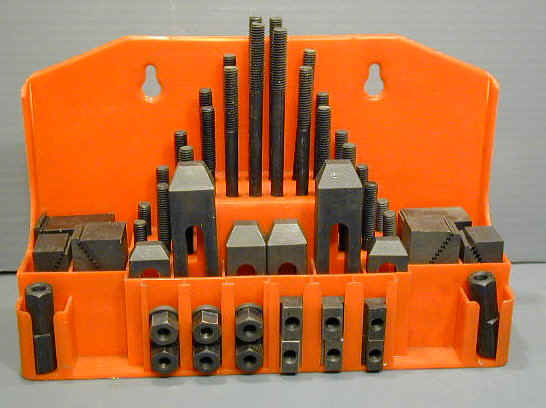
For much of the work done on the mill, a milling vise is the quickest and easiest way to hold the workpiece, but large and irregularly shaped work sometimes will not fit in the vise and that’s where clamping kits come in handy.
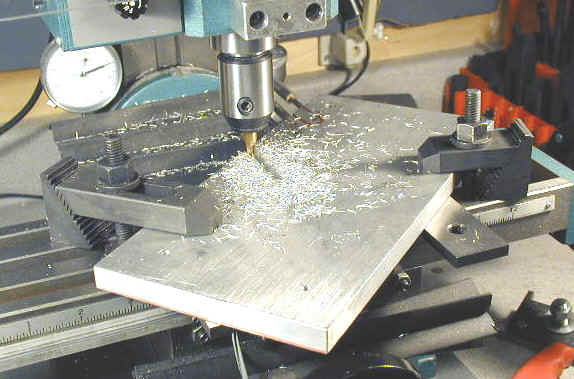
The kit consists of a number of step blocks, clamping fingers and bolts of varying sizes, plus T-nuts and clamping nuts arranged in a plastic or steel organizer. Step blocks are steel triangles about 3/4″ wide with little steps cut into the sloping side that are engage with similar steps in the ends of the clamping fingers.
The step blocks adjust the height of the clamping fingers to be even with the top surface of the workpiece. The clamping fingers apply the clamping pressure to the workpiece. They have an enlongated hole through which the clamp bolt passes and then are locked down by means of a clamp nut.
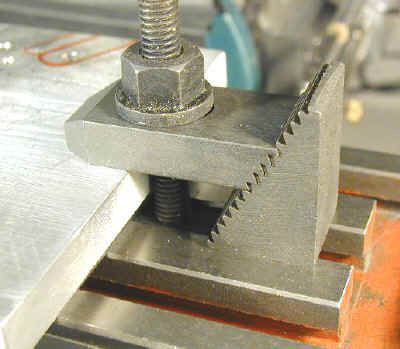
These sets are available from the usual tool suppliers such as MSC, J&L, Grizzly, Enco, HF and LMS for around $30-50. The sets are available with both 3/8″ and 1/2″ diameter bolts, but the 3/8″ ones are a better fit for the mini-mill.
The T-nuts must be the proper size for the T-slots in the mill table, which for the mini-mill is 7/16″. The nuts that come with the 3/8″ sets are usually 1/2″ wide which is too wide for the mini-mill table slots. You can mill these down to size, but a better solution is simply to buy some T-nuts of the correct size separately.
You can find them at Victor Machinery Exchange or can order your clamping kit from LMS (P/N 1144) who includes the 7/16″ T-nuts with their clamping kits.
By the way, the T-nuts are crimped at the bottom to prevent the bolt from passing all the way through and hitting the bottom of the T-slot.
Parallels – Must Have!
Parallels are used to support a workpiece when clamping it in a milling vise. They are nothing more than pairs of steel rectangles that are accurately matched in height.
In use, the parallels are placed adjacent to each jaw of the milling vise and the workpiece is supported by the parallels such that the workpiece is exactly parallel with the base of the milling vise, and thus with the milling table.
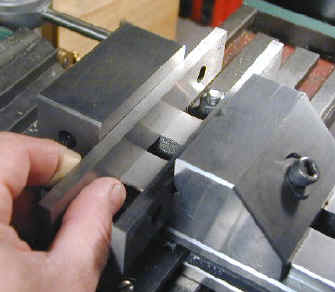
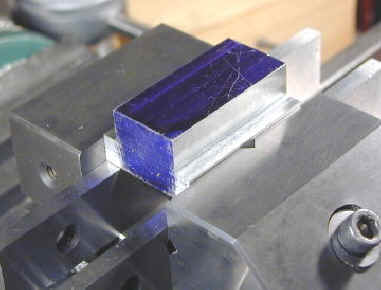
The photos above show placement of the parallels in the milling vise and a workpiece supported by the parallels. The workpiece is raised up so that the sides may be milled to form a T-shaped cross section.
Parallels come in sets in which the length and thickness are common to all, with pairs varying incrementally in height. For example, I have a set of 9 pairs, 1/4″ thick, 6″ long and with heights varying from 3/4″ to 1 3/4″. They come in a segmented wooden box. Import sets are available in the sale flyers from J&L, Enco, MSC and similar sources for $20-$40.
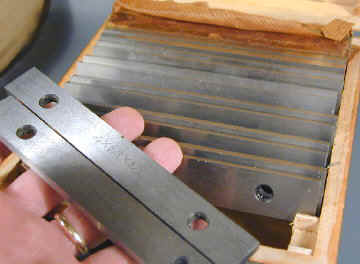
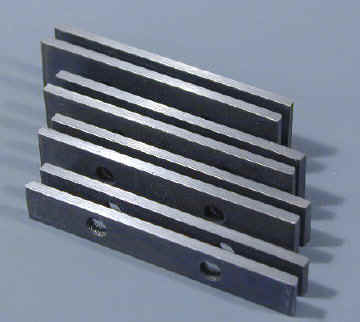
The set in the right-hand photo are 4″ long and 1/8″ thick. This is a cheap set in which only the top and bottom surfaces are ground and the sides are rough, but they are handy when the 1/4″ set is too thick; i.e. when the workpiece is less than 1/2″ thickness. For thin workpieces, you can use a single parallel to support the work.
If you are just starting out and money is tight, you can mill your own parallels. I have made some from time to time from 1/4″ acrylic plastic as shown in the next photo.
